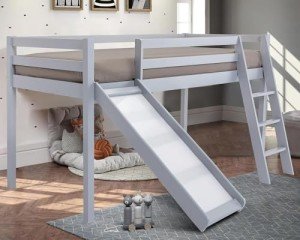What Will Slide Bed Be Like In 100 Years?

Understanding Slide Beds: A Comprehensive Overview
Intro
Slide beds represent an innovative advancement in the field of transportation and logistics, especially in the context of the trucking market. These specialized beds provide enhanced packing and dumping capabilities, increased performance, and better safety standards. As the demand for logistics solutions ends up being more advanced, slide beds become an essential tool for companies seeking to enhance their operations. This article looks into the various elements of slide beds, including their style, benefits, types, and upkeep considerations.
What is a Slide Bed?
A slide bed, typically referred to as a moving truck bed or slide-out bed, is a type of truck bed created to extend and pull back, permitting simpler access to freight. These beds can slide out either by hand or through automated systems, facilitating loading and discharging while lessening the strain on workers.
How Do Slide Beds Work?
The functionality of slide beds can vary based on their style:
- Manual Slide Beds: These beds require several individuals to pull or press the bed out. While simple and cost-effective, manual slide beds might not appropriate for heavy-duty applications.
- Automated Slide Beds: These beds run through hydraulic or electrical systems that permit simple and easy extension and retraction at the push of a button. Automated systems typically include security features to avoid accidents throughout operation.
The fundamental operation of these systems can be summarized in the following table:
| Type | System | Usage | Pros | Cons |
|---|---|---|---|---|
| Handbook Slide Beds | Pull/push operation | Light to medium loads | Lower cost | Requires physical labor |
| Automated Slide Beds | Hydraulic/Electric | Heavy loads and regular use | Convenience and efficiency | Higher initial investment |
Benefits of Using Slide Beds
Slide beds provide several benefits that make them an attractive choice for organizations in various sectors. These benefits can be categorized into operational performance, safety, and cost-effectiveness:
Operational Efficiency
- Easy Access: Slide beds enable workers to reach cargo without having to climb into the truck or maneuver around tight spaces.
- Time-Saving: Quick packing and dumping mean lowered turn-around times for automobiles, causing increased productivity.
- Better Space Utilization: The capability to extend the bed indicates that cargo can be arranged better, helping with much better use of space.
Security
- Minimized Injury Risk: With easy access to freight, the probability of musculoskeletal injuries decreases significantly.
- Enhanced Stability: Slide beds are developed to accommodate much heavier loads more uniformly, enhancing vehicle stability.
Cost-Effectiveness
- Increased Payload Capacity: Slide beds enable greater volume transportation without making considerable modifications to automobiles.
- Long-Term Durability: Investing in a quality slide bed can result in minimized maintenance costs in time.
Types of Slide Beds
There are numerous types of slide beds available in the market, each accommodating various requirements and applications. Here are the most typical types:
- Standard Slide Beds: These are the most common and serve basic purposes throughout numerous sectors.
- Heavy-Duty Slide Beds: Designed for bigger vehicles and much heavier loads, these beds strengthen structural integrity.
- Custom-made Slide Beds: Customized services cater to particular industry needs, such as animals transportation or specialized equipment.
Slide Bed Types Comparison
| Type | Ideal Use | Maximum Load Capacity | Personalization Options |
|---|---|---|---|
| Requirement Slide Beds | General transportation | As much as 3,000 lbs | Restricted |
| Sturdy Slide Beds | Industrial and building | Over 3,000 lbs | Available |
| Custom-made Slide Beds | Specialized transport requires | Differs by style | Highly personalized |
Upkeep Considerations
Maintaining a slide bed is crucial to ensure its durability and optimal performance. Here are vital maintenance ideas:
- Regular Inspections: Routinely inspect for wear and tear, guaranteeing that all moving parts are functioning correctly.
- Lubrication: Keep moving elements well-lubricated to decrease friction and avoid rust.
- Tidiness: Regularly clean the slide bed to remove particles and pollutants that may interfere with operations.
- Tighten Fasteners: Periodically ensure that all bolts and screws are tightened up to prevent structural failure.
FAQs About Slide Beds
Q1: Are slide beds ideal for all kinds of trucks?A1: While slide beds can be adjusted for a range of truck designs, it is important to seek advice from a professional to make sure compatibility.
Q2: How much weight can a slide bed hold?A2: The weight capability of slide beds varies widely; standard slide beds generally hold up to 3,000 pounds, while sturdy alternatives can accommodate a lot more.
Q3: How typically should slide beds be preserved?A3: Regular upkeep is necessary; inspections must be brought out at least every six months, with more regular checks suggested for heavy-use cars.
Q4: Can I personalize a slide bed for my specific requirements?A4: Yes, many makers provide customization options to accommodate industry-specific requirements.
Conclusion
Slide beds are quickly ending up being amongst the most efficient options for improving logistics operations. With Bunk Bed With Slide UK to boost access to cargo and facilitate quicker loading and dumping procedures, they exemplify a blending of innovation and utility that resolves the needs of modern-day transport. By picking the right type of slide bed and maintaining it appropriately, companies can significantly enhance their operational performance, security, and cost-effectiveness. The future looks promising for slide beds, as they continue to evolve and satisfy the growing demands of the logistics market.

